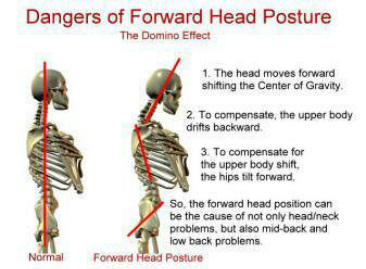
As mentioned previously the inside arch of the foot controls the reflex or nerve impulse that help us compress and decompress in our spine. This pattern of movement is still going to be our focus from here forward. Pattern of movement is the foundation of both, Muscle Release Therapy, MRTh(R) and Fundamental Movement Therapy(SM). Movement and decompression during movement is how both therapies function. Remember when we exercise there needs to be a specific reason otherwise it becomes recreation, our primary focus should be how we are going to aide the body in strengthening itself so that the compressive forces of gravity do not take place.
Our posture is definitely a complex issue for the brain; throughout our day there are many alterations to our internal posture. One primary issue for these alterations is muscle fatigue. When I speak of muscle fatigue it may become a confusing term. For conversation purposes let us say there are ten muscle fibers in a bundle, normally an individual will only use 10% of them. In this example that would be one, and we must remember that a muscle fires its internal combustion system in a millisecond. Once it uses that energy it must rest or recover, and depending if it is a muscle of posture or one of dynamics will determine the length of its recovery. What the brain must now do is recruit another muscle fiber to take the place of the one recovering. This is where it gets complicated, the brain must find one that is not already in use or one that is recovering. This would be like the hard drive on your computer trying to find space, sometimes we need a good defrag and that is what therapy provides. What the brain does is constantly re-position us so that we are in a state of comfort. We can help the brain out by changing up what we are doing or strengthen more fibers.
So I need to get to the gym more often and workout, but I do not have the time to do it. I get enough exercise just working around the house and yard! Although my
job is sedentary I get up and move around but find that throughout the day it is not comfortable so I probably don't do it enough. These are some of our excuses. I am a proponent of focused exercise, whether it is a movement therapy or a high intensity training session. As mentioned earlier I am also a major proponent of minimal physical exercise as we have a tendency to fatigue ourselves with obsessive compulsory disorder to our exercise. We all want immediate results and in so doing have a tendency to do too much in a short period of time. I know there is going to be some confusion with this theory but as I mentioned earlier it is not the muscle fiber that needs to recover as much as it is the nervous and glandular system.
In a focused exercise setting we are better able to recruit similar fibers because of the controlled method or pattern of movement. Research is also showing more and more that positive results are attainable through static exercise, dynamic movement is not always necessary, as witnessed by Hatha Yoga. Holding a position under duress in a proper position will help recruit fibers from that bundle. Now we may not use more than 10% at one time but if we are able to recruit more and more from the same bundle the body is able to hold its posture longer and longer and not create a stress point.
This will be our focus over the next few weeks as we discuss some of the items that cause us discomfort. These blog postings should also encourage many of you to write in and ask questions, please note that I will try an answer as many as possible on an individual basis but I will use some of them as topics in these blogs.
Know that there is a Reason to HOPE!
Dennis
 RSS Feed
RSS Feed
